Cold finishes are any surface treatment on ceramic sculptures that are not traditionally fired in a kiln. Glazes, underglazes and stains are all kiln-fired approaches that are classically used to finish ceramic pieces. We generally don’t use glazes as they tend to obscure sculpted details making them look like they’ve been dipped in cream. They can also be unpredictable. Despite extensive testing, the various factors that occur within a firing environment can cause disasters. One time, we’d done many test firings on a lovely satin gunmetal grey finish to confirm we had all the variables just right. We applied it to a kiln full of our sculptures. Several days later after the firing was complete, we opened the kiln and, to our horror, every sculpture had turned a nasty slime green, with the exception of one shiny silver chrome finish – no satin gunmetal in sight. Argh. That was one lesson we didn’t need to learn twice!
To make matters more challenging, glazes are notably difficult to alter once finished if you don’t like what you got. Kiln-fired underglazes and stains are another story, but after years of experimentation, we find cold finishes are our preferred option due to the flexibility, control, reliability and precision we can achieve. These can include any kind of paint – acrylic, oil, casein, wood stains, wax, encaustic, graphite and so on. Painted clay sculpture used to be a bit shocking to purists, but as humans have been engaging in these methods ever since primitive civilizations produced artwork, we’re just expanding on the tradition.
Below is a two minute time-lapse of applying an acrylic finish to our “Jacked Rabbit.” He was sculpted in Clay Planet’s “Smooth Sculpture” clay body – a very smooth (as the name would indicate), fine bodied clay that fires to a bright white color in oxidation.
To maintain color cohesion and what we call a sculptural finish (one that generally mimics the natural grey and tan colors and satin sheen of wet clay), we used a simple palette of Titanium White, Mars Black and Raw Sienna. We added a touch of Manganese blue in the eyes and Naphthol red for the eye corners and inside of ears. These we still blended with our main colors to keep them subtle. We also used a matte medium to tone down the natural gloss.
As seen in the time-lapse, we often work together on the same sculpture simultaneously, on opposite sides, continually turning the piece and attending to anything we see. This is very helpful when working with acrylic due to the fast drying time. Colin may be applying the color while I’m blending the transitions and brush strokes.
We start with a general color direction in mind, then proceed to “sneak up on it,” laying in softer washes to establish the general relationships and light to dark transitions. Once we like the direction, we increase the opacity. We allow the transitions between color sections to overlap and run into each other to avoid a “paint by numbers” feeling where the different parts have hard edges. This creates a consistency throughout the piece. We like the base layers to show through the upper layers, even if very subtly, to create more complexity in the color surface.
There are several phases to creating the base layers, going back and forth to make sure all the parts relate well to the others. Colin then stepped in with an airbrush to soften transitions, accentuate edges such as on the ears and blend the layers.
I then added detail to the eyes. Depending on the piece, we sometimes skip this step if we want the entire thing to have the “classic sculptural finish” without delineation of parts. For our Humanimals, we find details in the eyes adds an element of believe-ability and relate-ability.
Once all of these parts are complete, we let the piece rest overnight so we can assess it with fresh eyes in the morning. We go over it a final time, refining details and areas that we may have missed on the previous passes. We often find that there is one final pass after the photography as the camera somehow manages to find things we have missed.
“Jacked Rabbit”, along with our preliminary concept sketch will be part of the “Character in Context” show this summer at the AR Mitchell Museum of Western Art in Trinidad, Colorado. The show opens May 2, showcases an incredible roster of artists and will feature a weekend of events including live painting demonstrations with several attending artists, including Greg Manchess. There are events planned throughout the town and weekend. It will be lots of great art and fun!




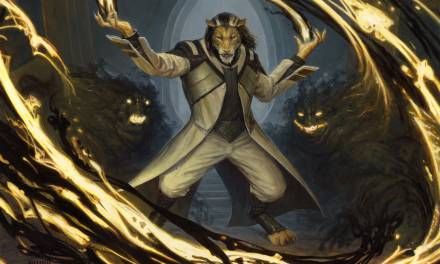
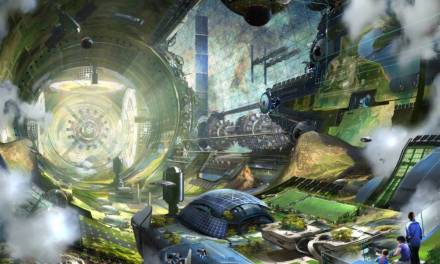
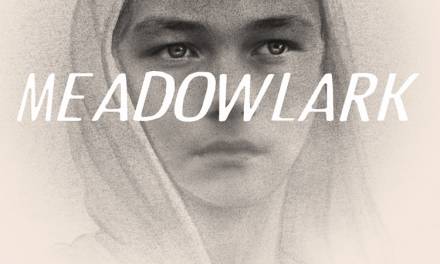
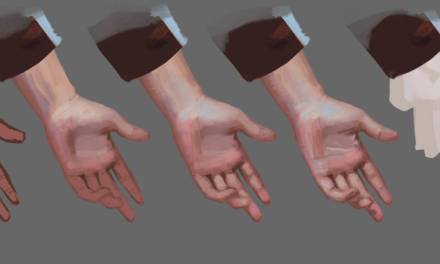
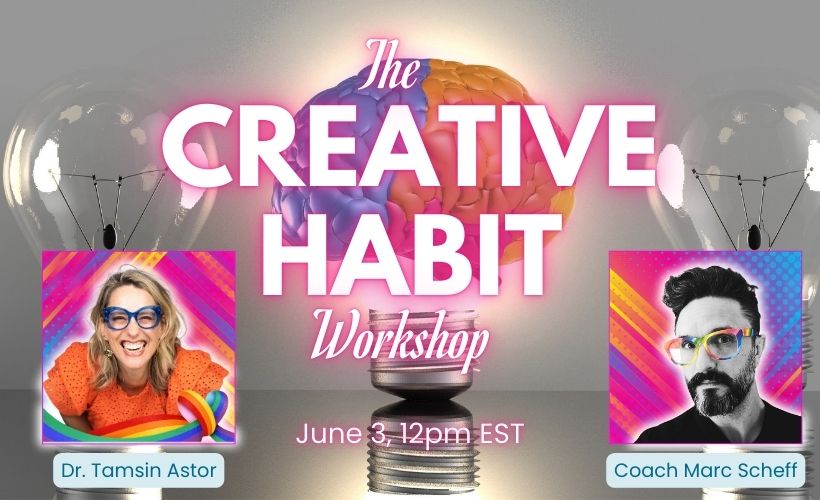
Thank you for this, Kristine (and Colin), and the work you put into making everything, from sketch to figure to article on Muddy Colors!
“Sculpting” seems like drawing times one thousand (literally, in the case of 3D printers…)–it’s daunting, but so informative. And alive! I believe he could twitch an ear in my direction, and then punch me for thinking evil thoughts. Jacked rabbit, indeed!
I do have a question: did you fix or “harden” the sculpture before painting? I imagine so; but from what you wrote, maybe not in a kiln? Just curious!
Hi Courtney – Thanks for sharing your thoughts. Yeah, sculpture has a lot of challenges, but… I always thought drawing was magical! That entire worlds can come into being just with a common piece of paper and a pencil – astounding!
I’m pleased that you like Jacked Rabbit and that he brings some evil thoughts to you 😉 Indeed, he was fired in a kiln prior to finishing. Ceramic clays need to be fired (heated/”baked” to anywhere between 1900º and 2300º F) in order to become “vitrified” (glass-like) and permanent. Water based (ceramic) clay goes through a molecular change during the firing process that make them somewhat to completely impervious to liquid. Without going through this conversion, our poor Jacked Rabbit would have melted a bit when we started putting water on him. Apologies for the lack of clarity on that point in the article!
This is so cool! I love how they explain their process and why they prefer cold finishes. That slime green glaze story is hilarious and a great lesson learned! Can’t wait to see “Jacked Rabbit” in person someday.
Thanks for sharing your thoughts – I appreciate hearing about what readers find intriguing. “Jacked Rabbit” is currently at the “Character in Context” show at the A.R. Mitchell Museum in Trinidad, Colorado along with a terrific selection of works from the fantasy/Imaginative Realism/Illustration fields. All the works in the exhibit also show some of the original sketches/concept ideas alongside the finished works – it’s really interesting. And yes, in retrospect, the slime green glaze happening is hilarious – at the time, not so much, but like many things, with time, it evolves into a funny story. We always appreciate the valuable lessons life provides that don’t cost us too awfully much.
Wow, the “Jacked Rabbit” is super cool! I love how they explain their cold finish technique. That slime green glaze disaster sounds like a nightmare though! So glad they found a method that works for them.
Happy to hear you enjoyed the article and Jacked Rabbit. The slime green firing was a nightmare for sure, but we certainly learned something valuable that set us on a new direction that we much prefer. Thanks for reading and sharing your thoughts! 🙂
This is such a cool technique! I love the idea of bypassing the kiln and having more control over the final look. That slime green glaze story is hilarious though, total nightmare fuel for any artist! Gotta check out that time-lapse.
Amazing job! I was genuinely impressed with how well thought-out this post was. It hit all the right points and even brought up a few things I hadn’t considered before. This is quality content — the kind that actually teaches and engages instead of just taking up space. Thanks for sharing your knowledge so generously!
Loved this! It’s obvious you know your stuff and care about explaining it clearly to your readers. I really appreciated the examples and the logical flow from start to finish. It’s the kind of content that actually makes me want to learn more about the topic. Thanks for putting your time and expertise into this — it definitely shows!
This is the kind of post that reminds me why I still check blogs and forums. It wasn’t just well-written, it was actually helpful — and that’s becoming rare these days. Thanks for taking the time to break things down and make them accessible. I can imagine this being incredibly useful for a lot of people. Keep up the great work — I’ll be keeping an eye out for more like this!
Really appreciate you sharing this — I found it to be both informative and enjoyable. It’s not easy to strike a balance between thorough explanation and readability, but you nailed it here. I’ll definitely be referring back to this when I need a refresher. Great work and looking forward to more from you. You’ve got a new regular reader here!
This is exactly the kind of post I was looking for. It answered questions I didn’t even realize I had. The structure was great, the tone was helpful, and I could tell it came from a place of real knowledge and passion. More content like this is always welcome. Thank you for putting the time into this — I’ll definitely be sharing it with others who could benefit from it too.
Excellent post! You managed to explain the concept so well that even someone new to the topic can walk away feeling informed. I really liked how you didn’t overwhelm with jargon and kept the language clear. It’s rare to find content that’s both well-researched and easy to read. I’ve subscribed to your updates, and I’m genuinely looking forward to what you’ll post next. Thanks again!
Just wanted to drop a quick note to say how much I enjoyed reading this. It’s refreshing to come across content that doesn’t just scratch the surface but actually dives deep into the topic. I also appreciated how organized it was — made it a breeze to read from start to finish. Keep posting more like this, you’ve definitely got a new follower here. Great job and thank you for sharing!
Wow, this post was packed with useful information! You clearly put a lot of effort into researching and presenting everything in a way that’s both educational and easy to understand. I especially liked the tone — it felt friendly, not preachy. Thanks for sharing something that actually adds value instead of just rehashing what everyone else is saying. Definitely bookmarking this one!
This was such an insightful read! I really appreciate how clearly everything was explained — especially for those of us who may not be experts in the topic. The examples made it super easy to follow along, and I love that you included practical takeaways. Posts like these are a reminder of how powerful good content can be. Keep up the amazing work — looking forward to your future posts!
Explore a vast, massive world that is filled with 2D and 3D graphics that let you make and modify every part of the.
bitAIM+ AI Aim Assistance Carrom. An AI System help You To Practice All Masters Shots And Make You A Proffesional Carrom Player.
SlideShare is now one of the best platforms to share documents, presentations, infographics and educational content over many different subjects.
PPTGet.com is a quick and user-friendly online downloader that lets you to download slides infographics, Powerpoint presentations, and other documents from SlideShare.
Good Content excellent resource
bitAIM is an AI tool that accurately predicts direct and in-direct shot and multi-collision coin collisions using screen images and Image Recognition techniques. It helps practice carrom pool shorts and develops professional skills, but is intended for practice only and not for big competitions.